Best microscopes for students 2026
From the classroom to your home lab, these student microscopes offer sharp detail, easy use and great value for budding scientists.

Owning one of the best microscopes for students is a necessary tool for any young person studying science at high school or college. We've selected a range of microscopes that all offer professional and scientific capabilities, with something to suit all budgets and needs.
Our picks of student microscopes are a step up from the best microscopes for kids. These all offer advanced features, and many of the microscopes we've chosen here would be found in a professional laboratory environment. We've considered functions that would be useful in a classroom environment, and we've assessed each microscope based on its functionality and its ease of use. These aren't necessarily for total novices, although we do have a beginner option for those who still need to learn what mistakes not to make with a microscope.
The quick list
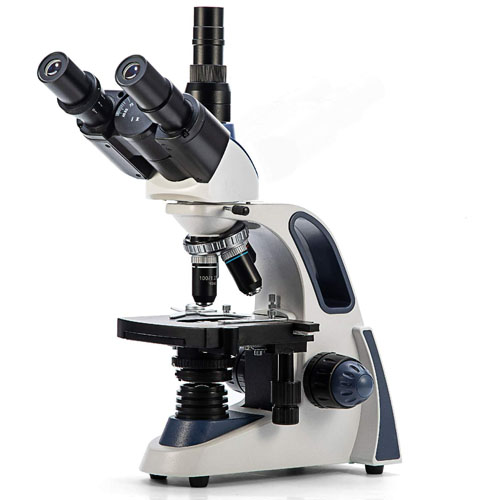
Best overall
Capable of professional and clinical microscopy at a reasonable price, we think this is the best microscope overall for students.
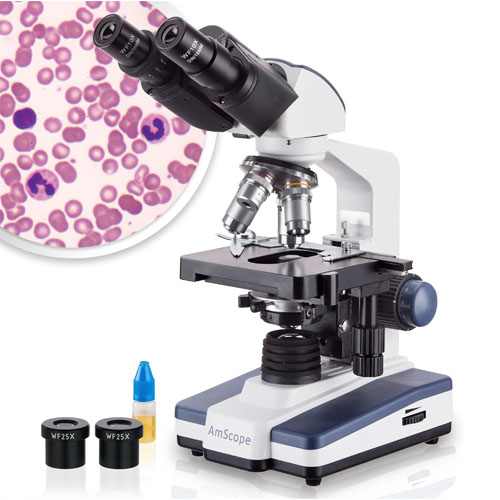
Best for biology students
For more advanced users like biology majors, vets and laboratory applications, it's a fantastic microscope with extra functionality.
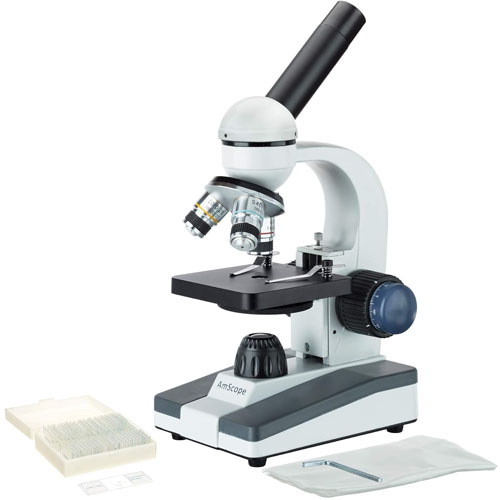
Best cheap microscope
While it's obvious that corners have been cut to keep the cost low, we think it's a decent starter microscope for beginners or anyone on a lower budget.
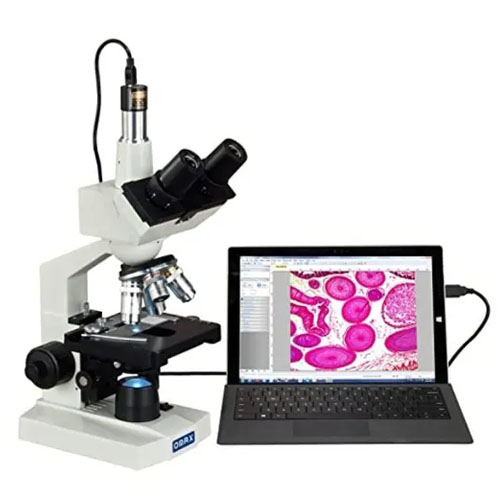
Best camera microscope
If you're looking for a microscope with a camera to photograph and share your findings, this is a great option, although you'll need to purchase slides separately.

Best for beginners
Packed with great features and offering fantastic value for money, the Swift SW200 DL Compound Monocular Microscope is a highly versatile and portable all-rounder
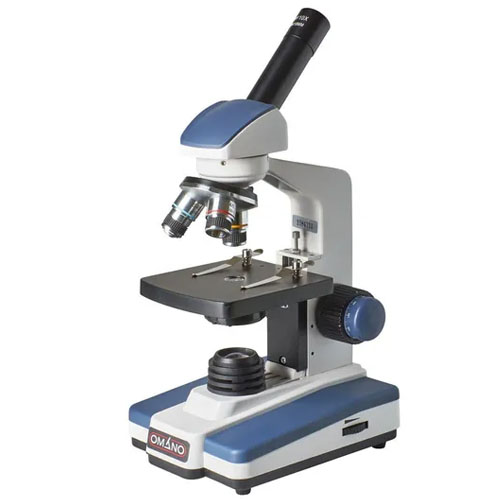
Best portable microscope
For users looking for a compact and lightweight microscope, this option is great for students in middle school up to adulthood — although perhaps not total beginners.
When selecting a microscope, it’s important to consider various features, such as the field of view, frame construction, lighting, optical quality and resolution. There are several types of microscopes available, and we've gone into more detail about this in the FAQ section of this page. There, you'll find comprehensive answers from microscope expert Donna O'Connor, who has provided details about all of the options on the market.
The most common microscopes in schools and universities are compound, stereo (binocular) and digital microscopes. These are the units we will focus on in this guide.
Younger students may benefit from a more basic and cost-effective model, while those in higher education or pursuing degrees might prefer a more advanced model. For many elementary-age observers, it might be worth checking out our guide to the best microscopes for kids. Curious minds can also check out our guides to the best chemistry sets and best binoculars for kids too.
Best microscopes for students we recommend in 2026
Why you can trust Live Science
Best microscope for students overall

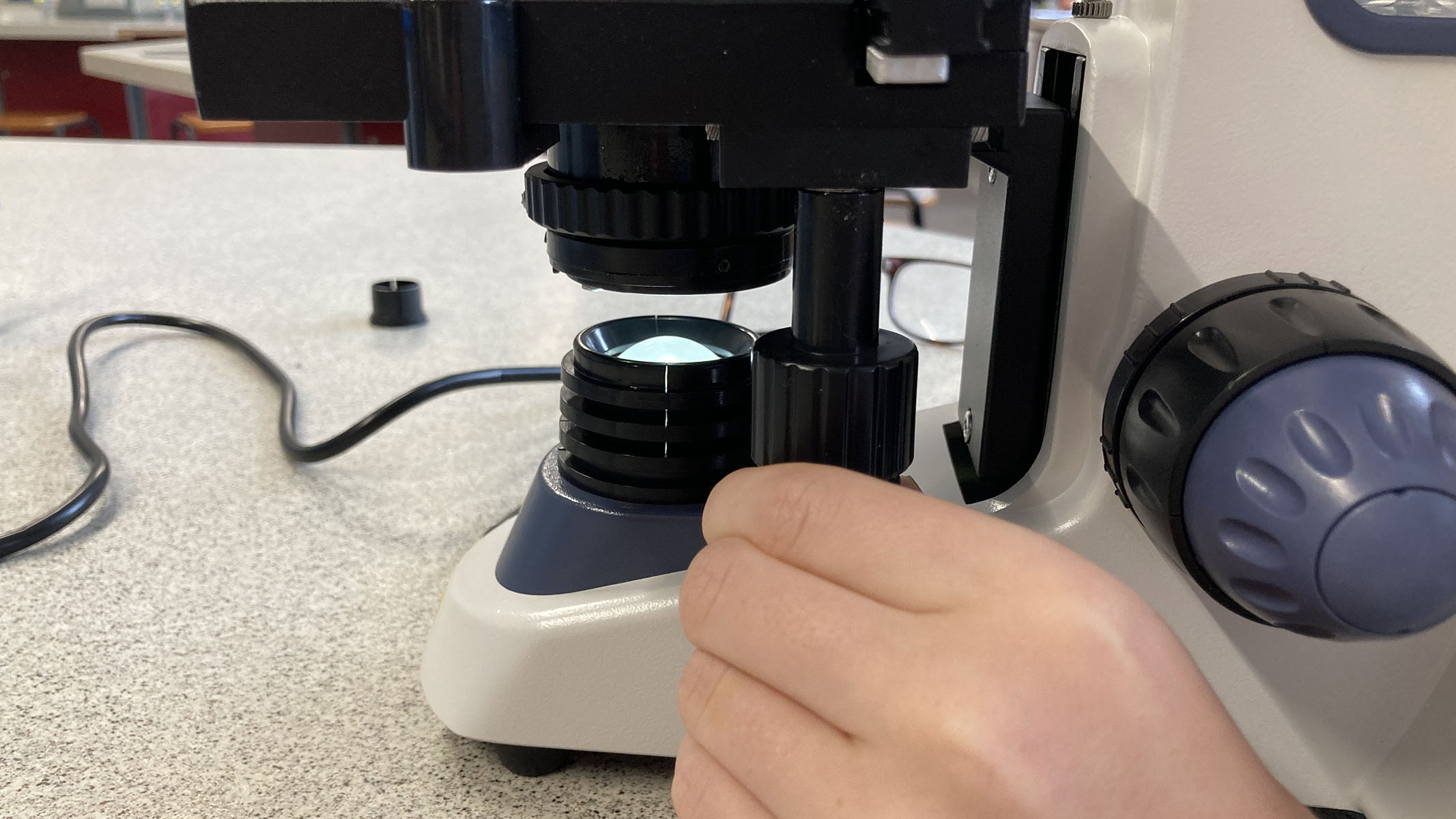

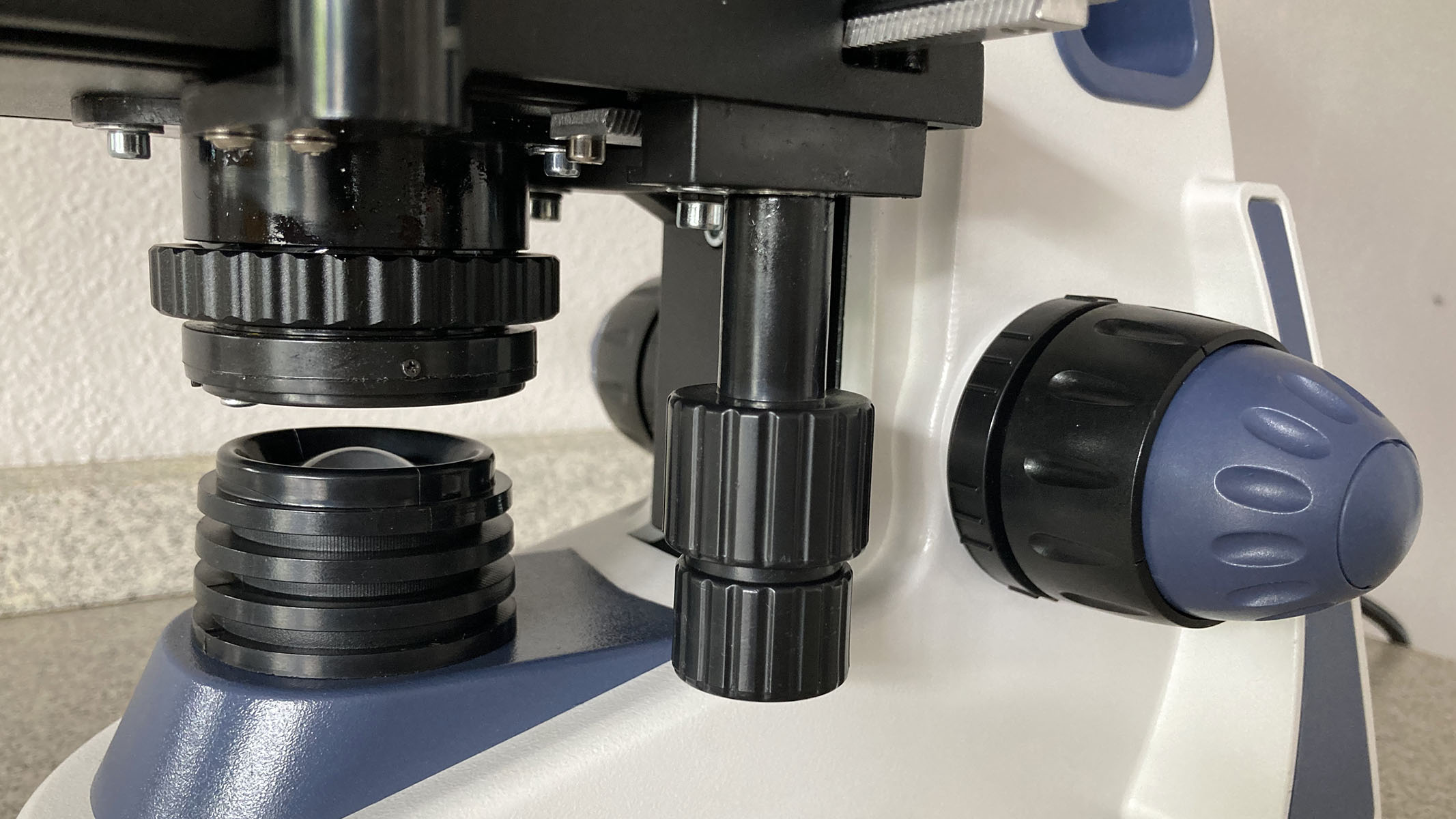

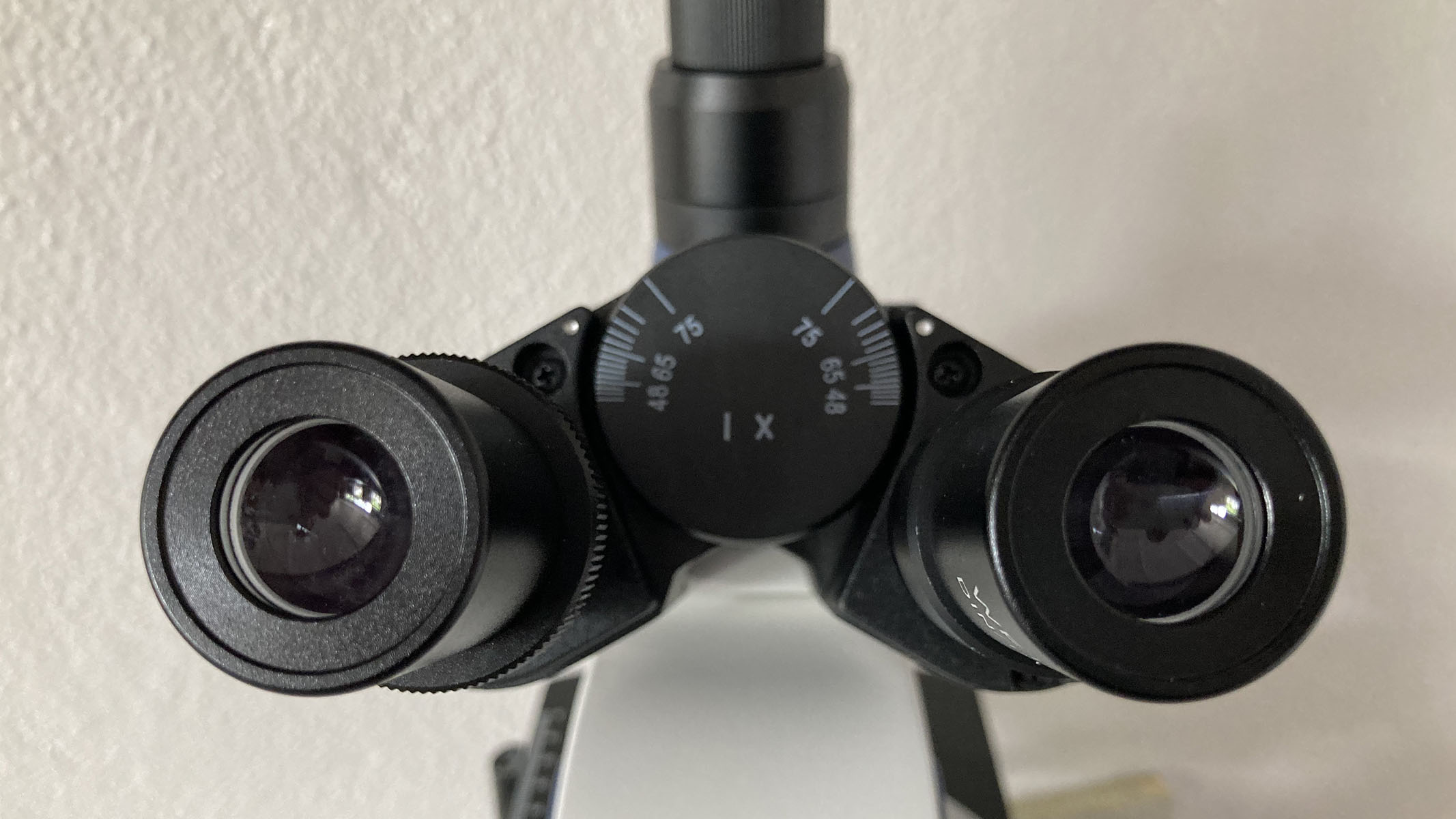
Specifications
Reasons to buy
Reasons to avoid
✅ You want a large magnification range: With 2 pairs of eyepiece lenses and 4 objective lenses, this microscope has 40X-2500X magnification.
✅ You want to photograph subjects: With the Swiftcam add-on, subjects can be photographed, videoed, projected and live-streamed.
❌ You want to observe whole or solid objects: It doesn't have a built-in top light.
❌ You want a portable microscope: It's quite heavy (12.9 lbs/5.85kg) and requires a power source. Check out the Omano Discovery Professional Microscope instead.
🔎 Swift SW380T: With a number of features to enable clinical and professional compound microscopy, we found it to be an invaluable teaching tool for students of all ages at a reasonable price. We'd recommend the camera add-on for a fuller teaching experience, but overall we found it a pleasure to use. ★★★★
If you’re looking for a microscope that is perfect for students and advanced scientists alike, then the Swift SW380T is the microscope for you. It features four different DIN achromatic objectives, six different magnification levels (40X, 100X, 250X, 400X, 1000X and 2500X), and an ultra-precise focusing system — ensuring that you’ll always be able to see what you need to. We used it to view various subjects, including human cheek cells, onion cells, plant cells and a root tip squash, (squashing the tip of a root between the slide and coverslip) to find cells in the various stages of mitosis.
This model has a 30-degree tilt, which our students appreciated when we reviewed the Swift SW380T and none of them complained of neck strain. With a fully rotatable base, our students found it easy to concentrate during projects. It was smooth and easy to adjust, and you can manipulate the brightness with the LED control to prevent dazzling yourself and getting eye strain. The only thing we found somewhat tricky to use was when trying to attach the trinocular eyepiece, but it just takes some getting used to with repeated use.
This is a rather heavy microscope and so smaller students might have trouble carrying it around. If it's to be used in a classroom with younger children, then, we'd recommend a teacher move it around when necessary. That said, it's very steady and secure when it's in place thanks to its large triangular base. It's also easy to keep clean, and we appreciate that it comes with a dust cover to keep it safe when not in use.
But by far the most useful feature of this microscope is the trinocular rotating head, meaning the teacher was able to observe the student's specimens simultaneously to discuss the features and make sure the students were looking at the right part. Although, we'd have liked the lenses to have a built-in pointer, so whenever we wanted to direct the students to a certain part of the slide or cell, this had to be done verbally.
Along with the microscope, you will also get a 10X and 25X eyepiece, sample immersion oil, blue filter, dust cover, spare fuse and a user manual. There's also an option for a camera add-on, which we'd recommend if your budget allows.
- Read our full Swift SW380T review
Attributes | Notes |
|---|---|
Design | Strong and sturdy, but comfortable to use. |
Performance | Smooth and easy to adjust the brightness. |
Functionality | Available with a camera add-on for imaging and projection. |
Best microscope for biology students

AmScope B120C Siedentopf Binocular Compound Microscope
Our expert review:
Specifications
Reasons to buy
Reasons to avoid
✅ You want a clinical-quality microscope: With advanced LED lighting and 1.25 NA Abbe condenser, it's best suited to more experienced and advanced users.
✅ You want a lightweight microscope: At 3.25 lbs / 1.47kg, it's the lightest on this list.
❌ You're a beginner: This is an advanced scope for professional and clinical use — try the National Geographic Ultimate Dual microscope.
🔎 AmScope B120C Siendentopf microscope: A fantastic microscope for biology students, clinical exams and teaching demonstrations, this microscope has bright and clear optical quality, sturdy construction and is portable and ease to use for a reasonable price. ★★★★
The AmScope B120C Siedentopf Microscope is recommended for clinicians on a budget and students in medical school or who are studying biology. It has all the features of a basic microscope, plus other functionality advancements like advanced LED lighting and a 1.25 NA Abbe replaceable condenser with an iris diagram and a 52-77 mm interpupillary adjustment — both of which can help provide a better quality experience. The ocular tubes are also angled at 30 degrees to comfortably accommodate use while sitting down to prevent neck and eye strain, which is particularly useful for clinical usage as opposed to occasional use.
The double-layer mechanical stage helps to keep slides in their place, along with rotating them around to see all sides of the specimen. All in all, the kit comes with 4 DIN standard objectives (4X, 10X, 40XS and 100XS) which are achromatically corrected to improve resolution and color accuracy, a 10X and 25X eyepiece to extend the maximum magnification, a blue color filter, one bottle of immersion oil and a dust cover. It's worth noting here that it doesn't come with any slides.
We are yet to review the AmScope B120C microscope ourselves, but this is a popular microscope with consumers. On Amazon, users have rated it an impressive 4.3 stars out of 5, and praise has been given to its good build quality and solid design. It's also easy to set up, and users have praised its image quality.
Attributes | Notes |
|---|---|
Design | Sturdy yet lightweight build. |
Performance | Bright and clear images. |
Functionality | Advanced LED lighting and 1.25 NA Abbe condenser. |
Best cheap microscope for students


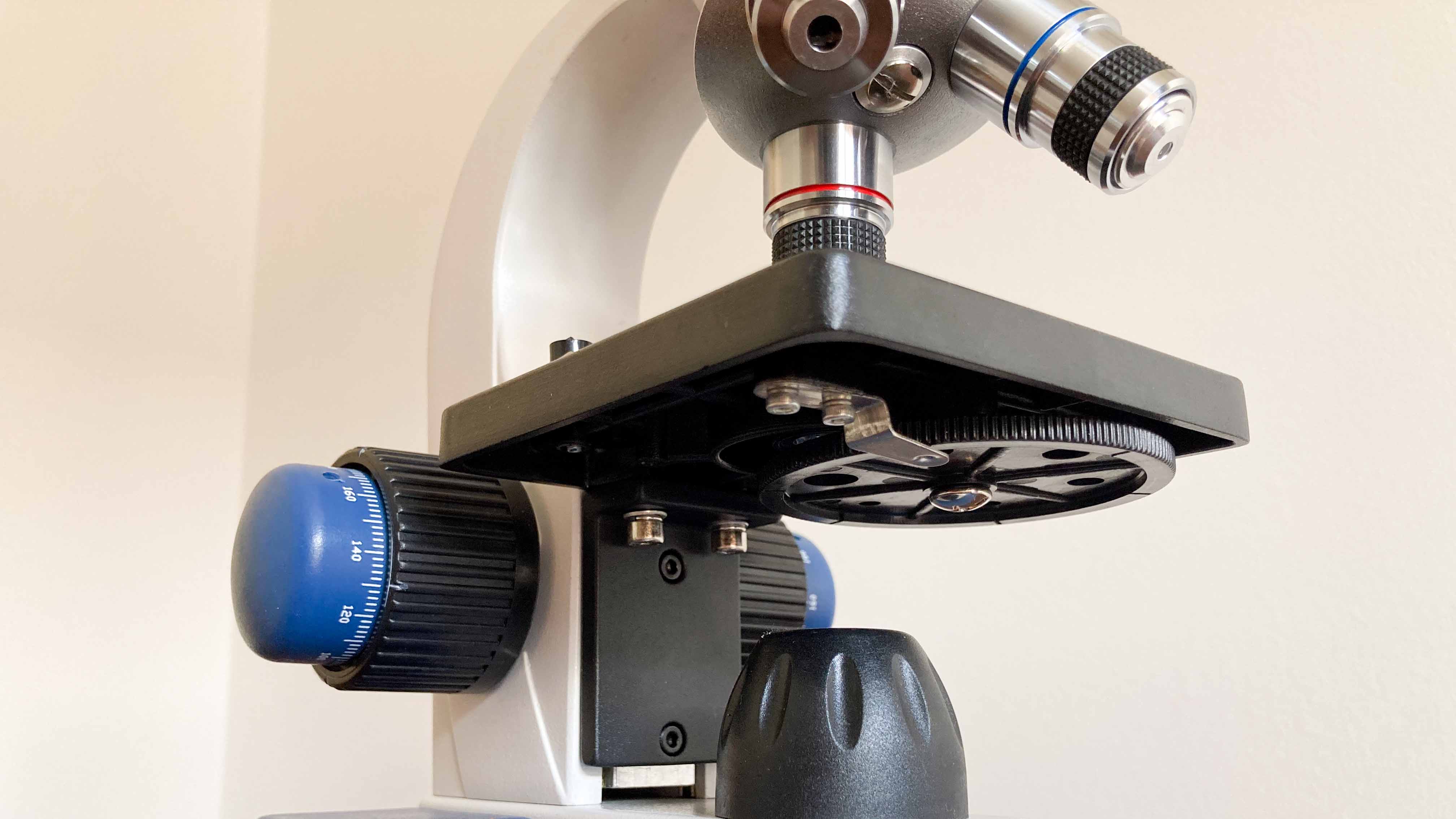
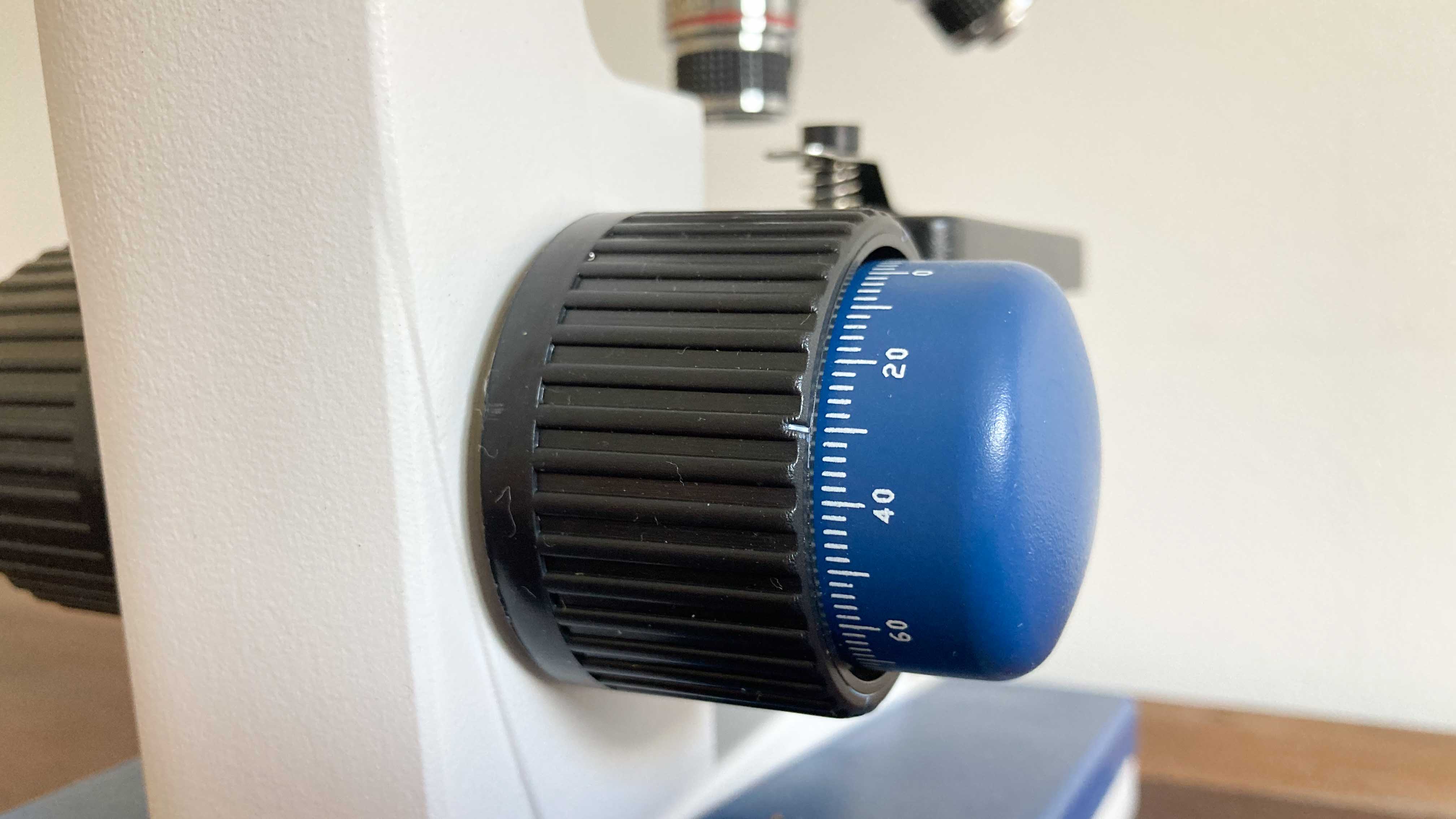
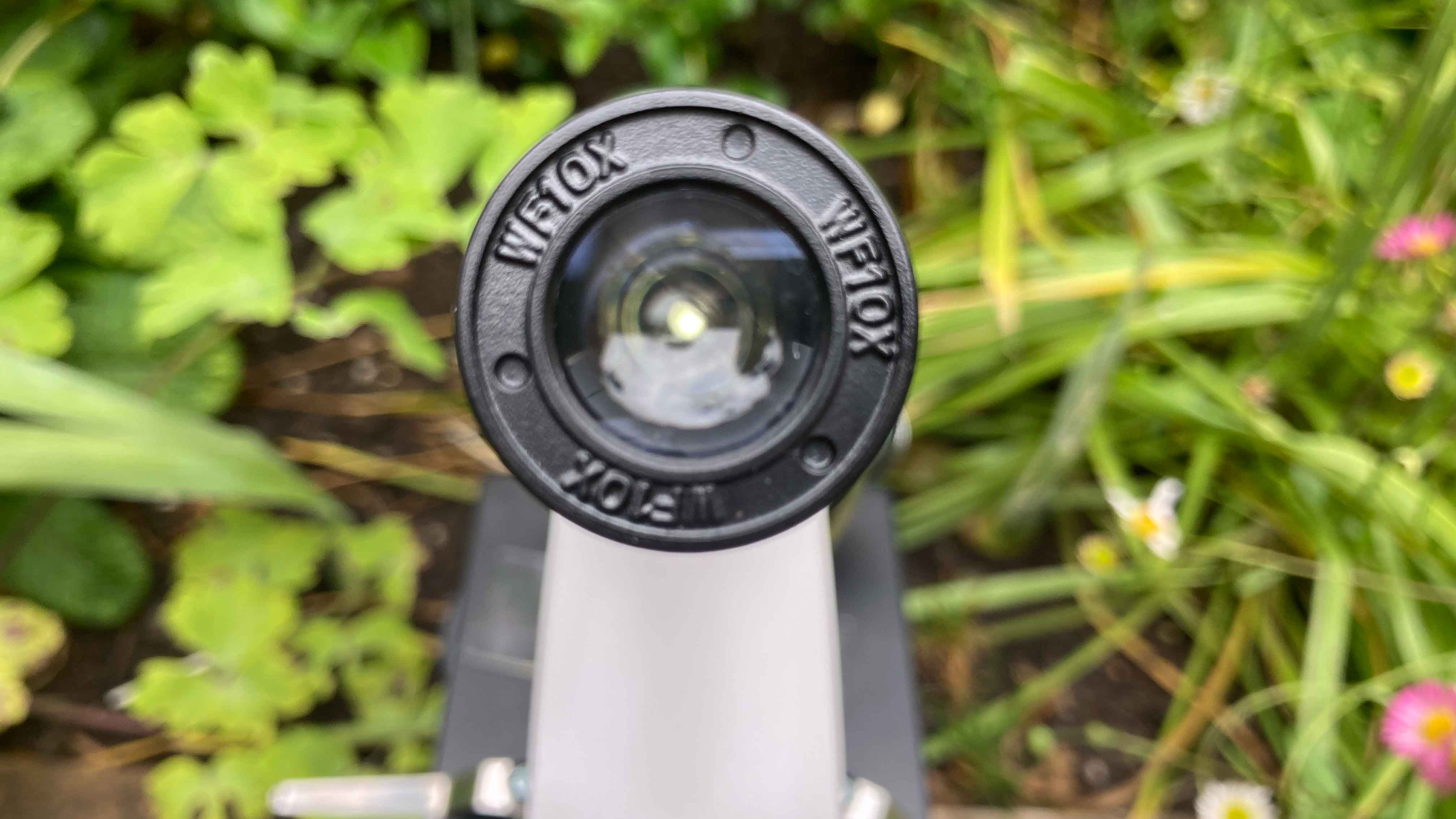
Specifications
Reasons to buy
Reasons to avoid
✅ You want a portable microscope: It's lightweight and can run on batteries, making it easy to transport outside.
✅ You're on a budget: Although it's lacking in some areas, it's a good starter microscope on a budget.
❌ You want bi or trinocular view: This microscope is limited to monocular viewing.
❌ You're an advanced user: This is more suited to beginners. For a more advanced microscope, consider the Swift SW380T.
🔎 AmScope M150C-MS: A good starter telescope for beginners and students, although there are more advanced features missing, as expected for the price. ★★★½
AmScope microscopes are known for being some of the best on the market for affordability and versatility. The M150C-MS is a budget-friendly option for students that comes with many features, including a monocular viewing head that has a 45-degree vertical inclination and 360-degree rotation capability. Because the M150C-MS model has a diascopic Brightfield illumination, light appears upwards through the slide rather than shining down on it.
This allows darker images to show up better through the lens, making it easier to see what you’re examining. You’ll have three objective choices: 4X, 10X, and 40X. The package also comes with a selection of 25 prepared slides, a widefield 10X eyepiece, two stage clips, and a dust cover.
During our full AmScope M150C-MS review, our first impressions were that its basic features were of good quality for the price and simple to use. It's lightweight so it can easily be transported outside for fieldwork, where it can be powered by 3 AA batteries (included) or connected to a portable USB power bank. When inside, this can also be connected to mains electricity. We used the AmScrope M150C-MS to look at human cheek cells, microorganisms from pond water, blood and onion cells.
Since this is a microscope coming in at a lower price point, you won't find some of the more advanced features here that you will on other microscopes on our list. It only has the option for monocular viewing, for example, which can lead to eye strain when used too often (but there is a pointer in the eyepiece, which is very useful for teaching). There's no XY mechanical function in the stage, either, but it's still a robust and sturdy microscope that's well-suited to inexperienced students.
Disappointingly, we found the quality control to be quite poor. The clarity of the lenses was terrible and had to be thoroughly deep cleaned, inside and out, and the rotating objectives head was not secured properly. These are fixable issues, but still annoying to have to contend with. That said, we were pleased with how it performed in the field, and it's a good starter microscope for a small budget.
- Read our full AmScope M150C-MS review
Attributes | Notes |
|---|---|
Design | Lightweight and portable. |
Performance | Didn't disappoint at lower magnifications. |
Functionality | Poor quality control. |
Best camera microscope for students
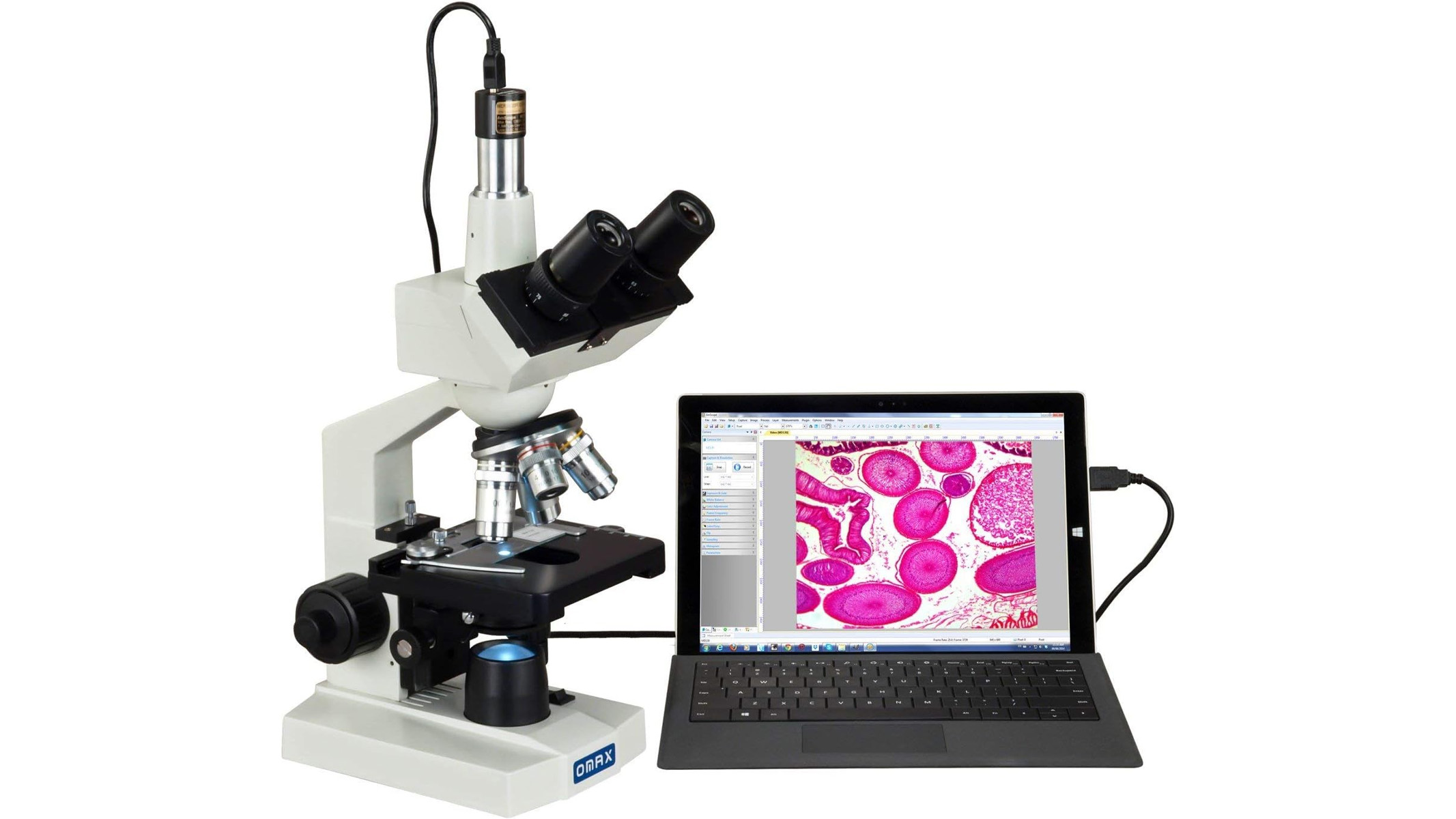
OMAX M83EZ-C02 40X-2500X Digital Lab Trinocular Compound LED Microscope
Our expert review:
Specifications
Reasons to buy
Reasons to avoid
✅ You want a high-quality microscope: For teachers, biology students and clinical purposes, this is a fantastic option.
❌ You're a beginner: Its features are overkill for beginners — check out the AmScope M150C-MS instead.
❌ You don't want a camera: If you don't need a microscope with a camera, the AmScope B120C would be the most similar option.
🔎 OMAX M83EZ-C02: Ideal for use in veterinary offices, clinics, schools and homes, this microscope features a digital camera to photograph your subjects and share your findings, although it doesn't come with any slides. ★★★★
If you’re looking for a microscope that has more than the average features, the OMAX Digital Lab Trinocular Compound LED Microscope is an option for you. Although the microscope can be used without a computer, it does come with downloadable software so that you can connect it to outside technology — and it works for both Mac and Windows. This allows you to upload and share your findings. The digital camera produces true color 640 x 480-pixel images.
There's a trinocular viewing head on this microscope, and it also has a dedicated photo port. It has mechanical stage controls and focusing, and its LED lighting is energy efficient and gives a great, natural-looking picture.
With a magnification capability of up to 2500X and widefield eyepieces capable of WF10X or WF25X, you won’t have a problem seeing your specimens. Its simul-focal design allows simultaneous use with both eyepieces so you won't need to switch between them.
It also features an inclined head (45-degrees) for comfortable viewing while seated or standing (great for preventing eye and neck strain) and a trinocular mount that can rotate 360-degrees. Plus, the ocular spacing can be easily amended using sliding interpupillary adjustments to probide greater comfort for different faces.
Attributes | Notes |
|---|---|
Design | Four objective lenses and two pairs of eyepieces. |
Performance | Easy to set up and use. |
Functionality | Produces true color 640 x 480-pixel images. |
Best for beginners

Specifications
Reasons to buy
Reasons to avoid
✅ You want a portable scope for field studies: The Swift SW200DL is easy to carry, light, and can be battery-operated.
✅ You want great value for money: This scope comes packed with features at a very good price
❌ You want super high magnification: This model only magnifies up to 1000X
❌ You use a microscope for extended periods: For prolonged use, it's probably best to opt for a binocular microscope.
🔎 Swift SW200DL: This multi-functional microscope has more than enough features to keep beginners busy for a good long while. It may not have the highest-end features, but it comes at a great price so you get fantastic value for money. ★★★★
The Swift SW200DL is both simple to use and beginner-friendly, yet also packed with enough features and high enough specs that it will give good resolution for more experienced users too.
Our reviewer loved the Swift's versatility, with a range of applications possible whether in the lab or in the field. To allow for these outdoor studies, it comes complete with three batteries, which are easy to access and change if needed. It perhaps only lacks the USB port for charging that some similarly-priced models do have.
We've found the components of the Swift SW200DL to be very well made, and we've been able to enjoy observations of both transparent and solid objects with ease. It's been easy to use both in the lab and out in the field, too, with the microscope's dual illumination source (both an upper and lower light) being particularly helpful.
The lower light, for instance, was important when viewing subcellular structures, while the upper light made it possible to scrutinize textures of different materials.
Well-made, versatile and at a great price, the Swift SW200DL is a superb little microscope that we would recommend for anyone.
- Read our full Swift SW200DL Compound Monocular Microscope Review
Attributes | Notes |
|---|---|
Design | Easy-to-operate mechanical components and lenses that can magnify up to 1000X. |
Performance | Versatile, with easy-to-use components and quality construction. |
Functionality | Dual light source excellent for versatile investigations. Wide range of applications. |
Best for group demonstrations
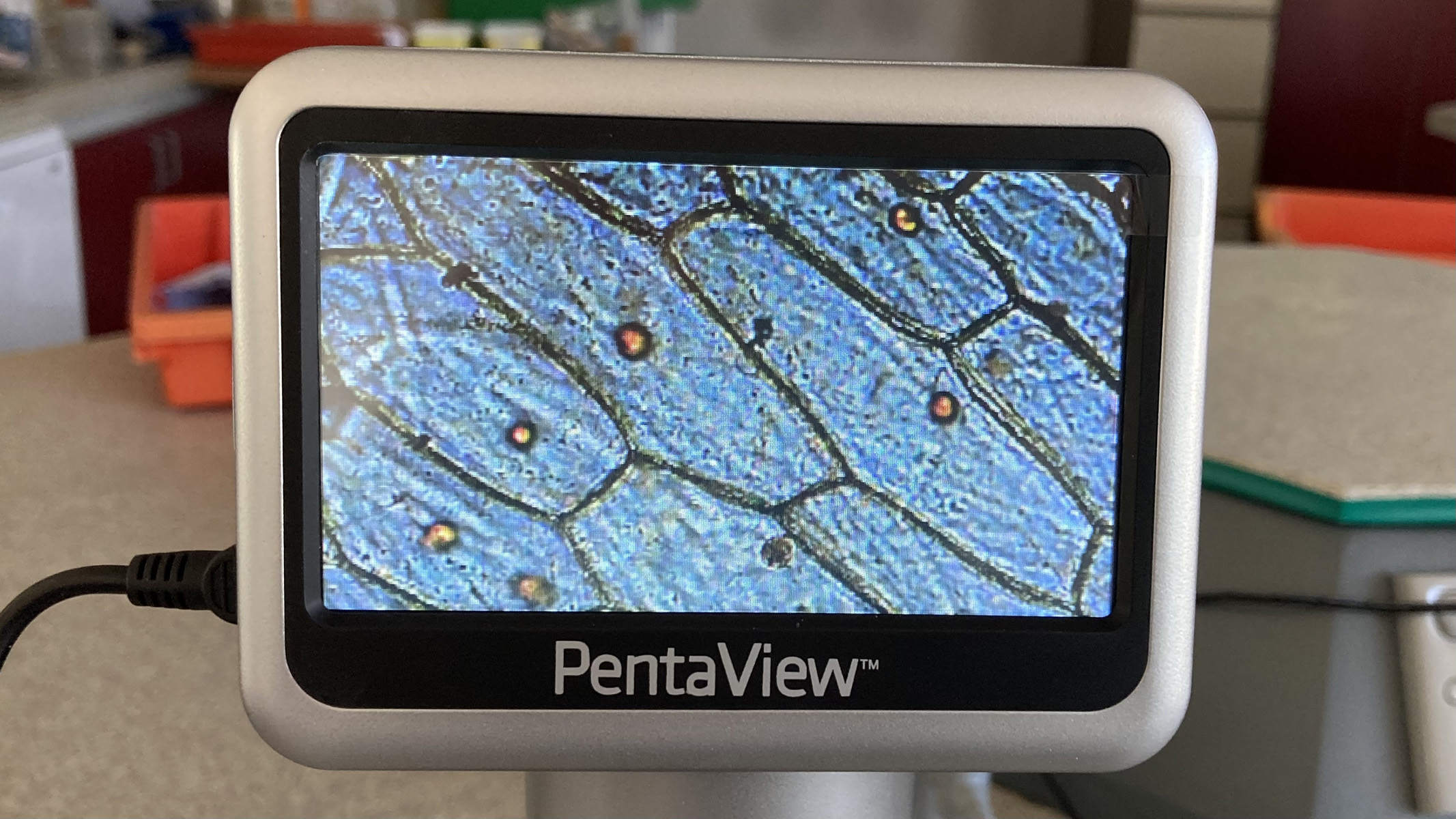
Specifications
Reasons to buy
Reasons to avoid
✅ You do lots of demonstrations: The LCD screen can easily be viewed by around twenty people at a time; this can be increased by projecting the image to a laptop or smartboard.
✅ You want to save photographs of your specimens: The microscope comes with SD storage so you can capture still and moving images.
❌ You want to view specimens ocularly: For this, you would need a trinocular microscope.
❌ You want to visualize solid specimens: For this, you would need a digital magnifying visualizer.
This is a great teaching tool, enabling a large audience to share the view under the microscope, either on the LCD screen, laptop or smartboard. It's highly portable too.
Our expert microscope reviewer spoke enthusiastically about the Celestron PentaView LCD digital microscope, and the general consensus is that it will be a fantastic addition to any microscopy suite, especially in schools for use in demonstrations or for when collaborative working is needed.
We love that this microscope comes with a carry case: Not only is it extremely handy, it's also rather stylish too, with a comfortable shoulder strap and a rigid top handle. It's clearly been designed with field use in mind, being easy to transport from A to B.
Professionals who like to make their own brightness adjustments might be frustrated by the automatic adjustments the LCD screen makes for 'optimum viewing brightness,' but this is less of a concern for beginners. Unfortunately, though, its light is not very powerful and it has a small working distance, so it's not a great choice for working with solid objects.
The fact that you can store photos and videos of your specimens is a desirable feature to have, though streaming movies in real-time is not possible.
Overall this is an excellent teaching aid that advanced users might find has a few niggles, but it is nevertheless an affordable option that will help your students understand demonstrations more quickly, as a group.
- Read our full Celestron PentaView LCD Digital Microscope Review
Attributes | Notes |
|---|---|
Design | The LCD monitor allows for multiple people to view at once. There are several professional features and an impressive level of magnification |
Performance | The LCD resoliution is good enough for beginners and students, though images appear grainy beyond 400x magnification |
Functionality | Excellent for demonstations to groups of students. Portable enough for field studies. |
Best portable microscope for students
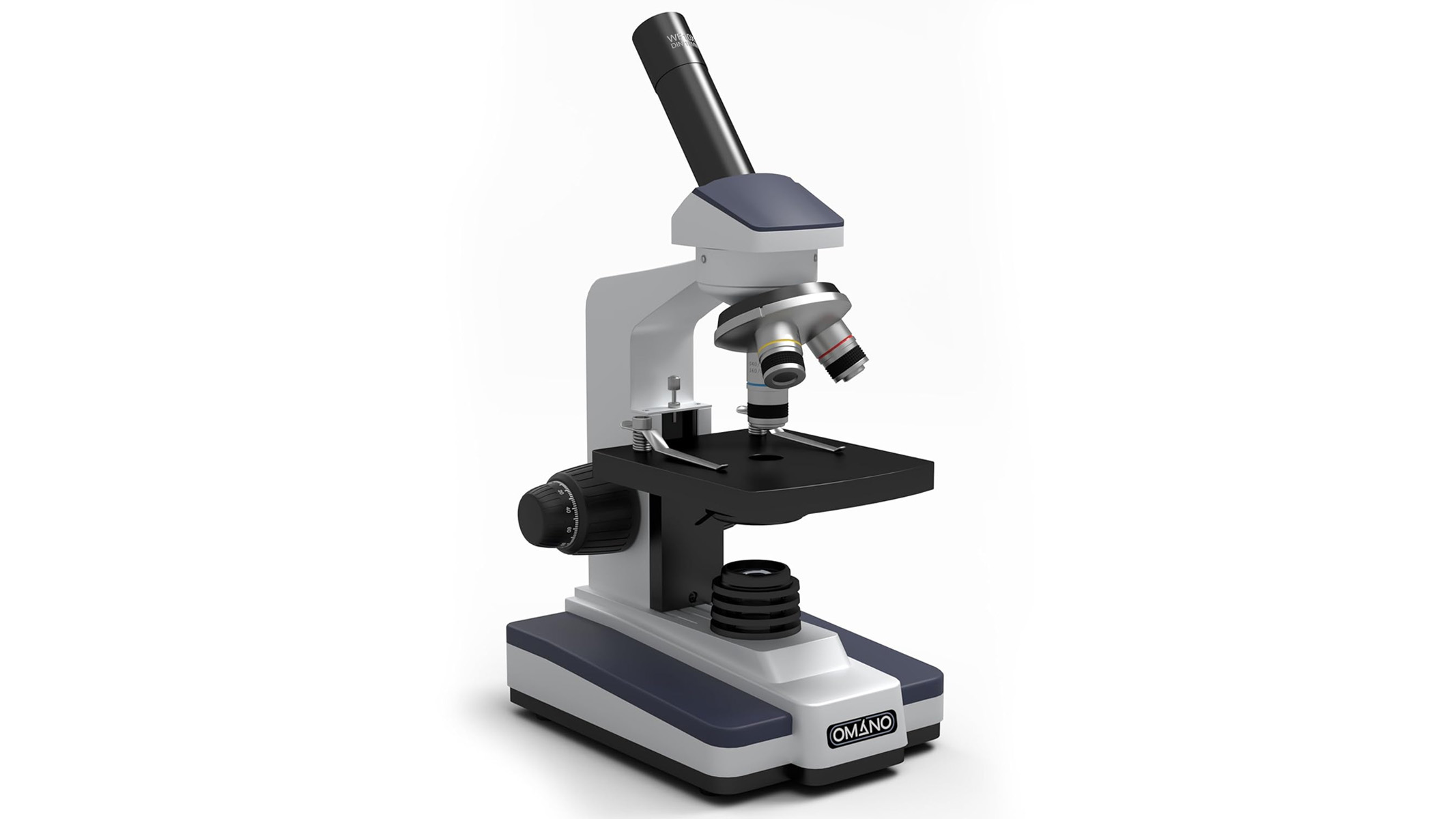
Omano Discovery Professional Microscope
Our expert review:
Specifications
Reasons to buy
Reasons to avoid
✅ You want a lightweight microscope: This is one of the most lightweight options in this list, alongside the AmScope B120C.
❌ You want lots of magnification options: This microscope only has 3 levels of magnification — 40x, 100x and 400x.
❌ It's your first microscope: While it may not overwhelm beginners, it doesn't come with any slides like the more beginner-friendly packages do, so you'll need to purchase those separately.
🔎 Omano Discovery Professional microscope: A great option for a variety of users from middle school up to adults, it's simple enough for beginners but has the functionality for more advanced applications. ★★★★½
The Omano Microscope for Students is a versatile option for students from middle school up to adulthood. It’s simple enough not to overwhelm a beginner but has the professional features needed for more advanced projects, making it a great middle-ground option.
Weighing in at just under 2 lbs, this model is also lightweight enough to easily transport to different locations, which is a big advantage for use in school and the home without having to keep the microscope limited to one area.
Whether you’re examining a plant from your garden or analyzing specimens for a graduate-level lab, this tool can help you get it done with three levels of magnification — 40x, 100x and 400x, although this is the least of all the microscopes in this guide. Variable illumination and 0.65 N.A condenser also enhances the image quality.
While we haven't had our hands on the Omano Microscope to review it ourselves just yet, it has very promising consumer reviews with an impressive 4.9 out of 5 star rating on Amazon. Users have stated that the build feels very professional, and many reviews also praise how quick and easy the microscope is to set up: You'll be using it in a matter of minutes. Make sure you have some slides prepared before you go though, because this is a model that doesn't include any slides in the box.
Attributes | Notes |
|---|---|
Design | Lightweight and easily portable. |
Performance | Easy to set up and use. |
Functionality | Only has 3 levels of magnification. |
Best for busy classrooms
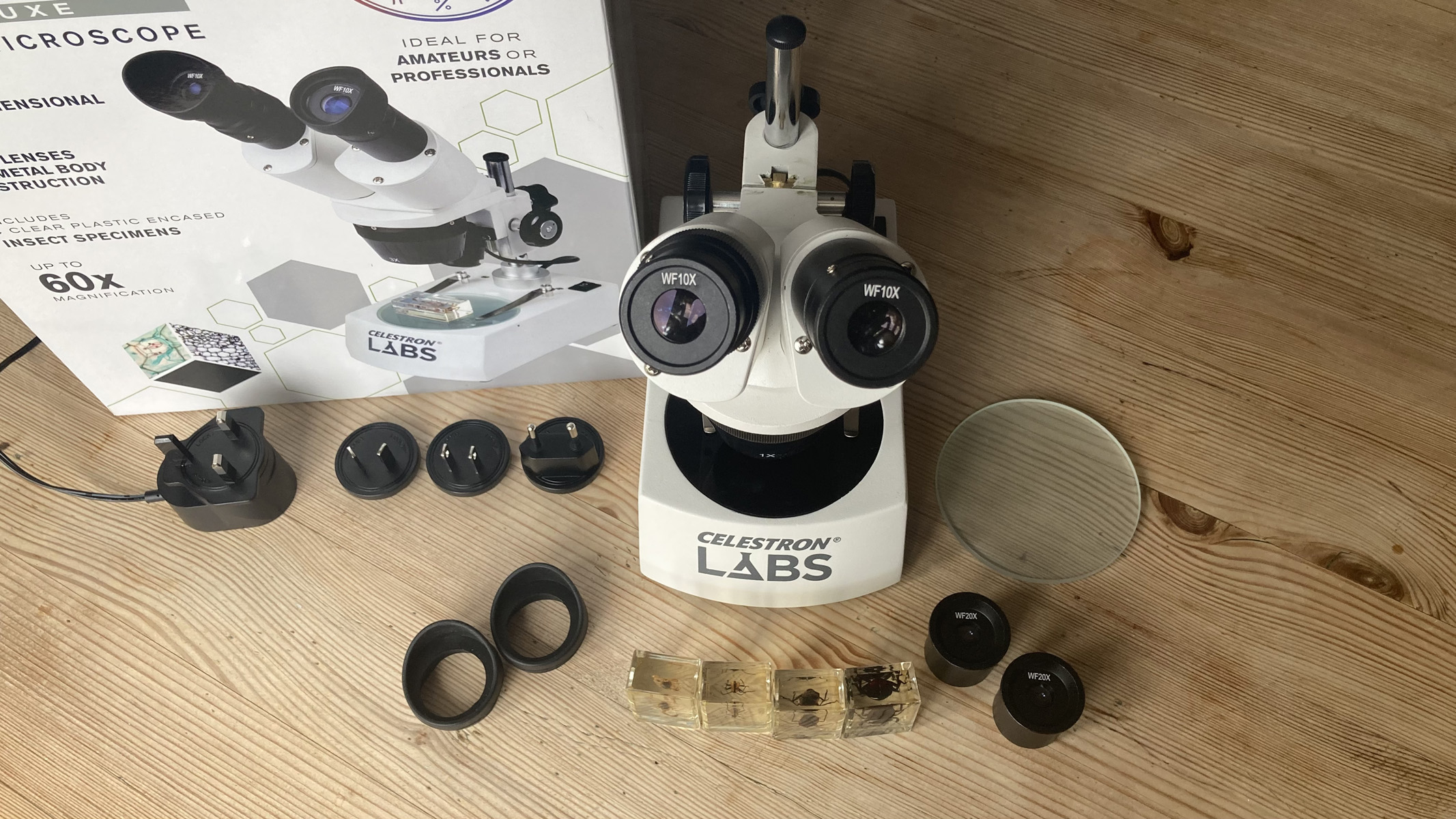
Specifications
Reasons to buy
Reasons to avoid
✅ You want to examine 3D objects: The two binocular tubes images combine to create a three-dimensional image.
✅ You will be looking at larger objects: The gap between the stage and lenses can take objects of upto 54 mm.
❌ You want high magnification options: The low 60x magnification allows for a wider field of view but you can't pick out very fine details.
❌ You don't have good vision in both eyes: If one eye is weaker than the other, a monocular microscope would be a better choice.
🔎 Celestron Labs S10-60 Stereo Microscope: This sturdy microscope looks and feels professional. It is robust enough not to have to be too delicate. The low-powered and clear 3D images make it a great research or teaching device. ★★★★
The Celestron Labs S10-60 is a fantastic piece of kit. We've found it very easy to learn, although it's certainly beneficial if you have a bit of experience before you jump in. It's a professional-looking piece of equipment that's been designed with proficient users in mind: It's of a solid construction and has some very nice touches in its design.
Thanks to the two separate optical pathways, it's a good value-for-money tool that can be used to view solid objects in 3D. Our reviewer did identify a few flats, such as the lack of battery function, the difficulty of exchange eyepiece lenses and a more solid base.
However it is certainly suitable for both tiny specimens and solid objects. For solid objects, the light source reflects from the object's surface, and for thin samples, the light shines through the slide before continuing up the tubes and into your eyes.
The supplied accessories, like the rubber eyecups and translucent and opaque plates, give the microscope a more sophisticated feel.
During our hands-on Celestron Labs S10-S60 review, we found the images through the scope were clear, although the 60x magnification wouldn't be enough to use for cell microscopy. Instead, it excels at 3D viewing and the large 54 mm working distance lets us examine the surfaces of larger objects, like coins and avocados.
- Read our full Celestron Labs S10-S60 Stereo Microscope Review
Attributes | Notes |
|---|---|
Design | Stereo microscope with a large working area |
Performance | Produces clear 3D images and has a good range of low magnification |
Functionality | Top light enables viewing of solid objects and a choice of stage plates to provide the best contrast. |
Best student microscope for shared views


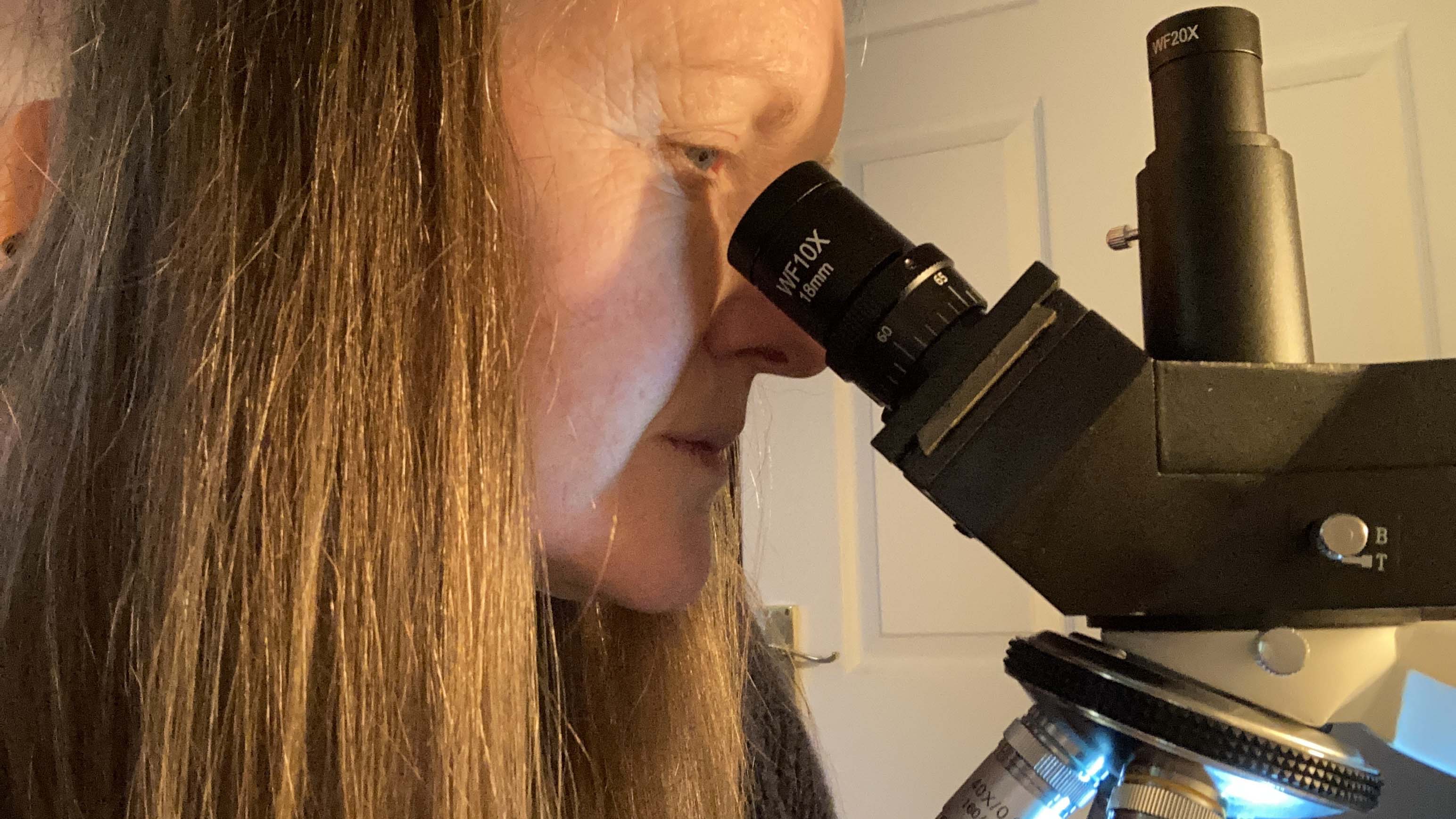

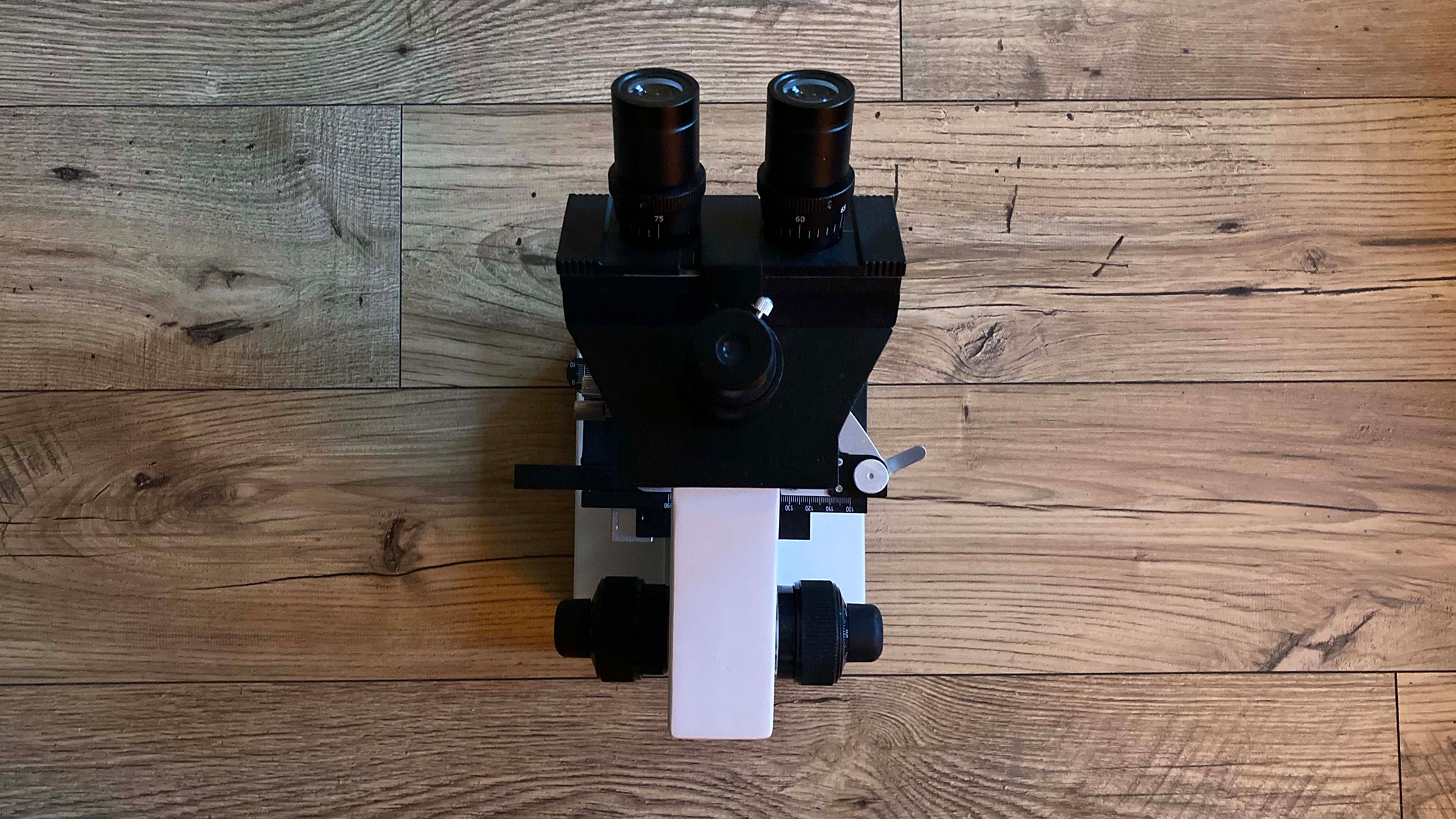
Specifications
Reasons to buy
Reasons to avoid
✅ You want to be able to share views: The trinocular design means two people can look into the telescope at once.
✅ You want to be able to view specimens in 3D: The separate images from both eyepiece tubes combine to create a three-dimensional image.
❌ You want a portable microscope: Weighing over 5.5kg, this isn't the lightest microscope to move around easily.
❌ You want one eye views: The stereo viewing depends on ocular information from both eyes, so it's not ideal if you have reduced eyesight in one eye.
🔎 Celestron Labs CB2000C: This is a powerful, versatile telescope that gives fantastic stereo views, and allows a second person to look in thanks to the trinocular. It has plenty of functions that more advanced users will love. ★★★★
The Celestron Labs CB2000C Advanced Biological Trinocular Microscope is a rather advanced instrument that comes highly recommended by us.
There's quite a lot of setting up to do, and while we wouldn't recommend this microscope to absolute beginners, it is a great tool for enthusiasts who already have a little experience using a microscope. This one boasts a range of professional features, including magnification from 40X all the way up to 2000X, stereo imagery, a trinocular eyepiece tube, and adjustable illumination.
What's particularly neat is that the trinocular allows a second person to come and share your views, which makes it ideal for joint studying or group projects. Allowing more than one person to view at once allows for real time feedback, which can be hugely beneficial in an educational setting. The downside is that the primary viewer must view in stereo, which might pose a problem if you have reduced eyesight in one eye.
The box contains everything you need to get started, including a set of 10 prepared slides and filters, giving you something to try it out on right away, which is a nice touch.
In our Celestron Labs CB2000C review, we praised the quality build of the microscope. It's robust and feels like a professional piece of equipment, well suited to life in a laboratory. Due to this, it does take some time to set up properly, so it's not a great choice for a complete beginner, but for anyone who has used a microscope before, we whole-heartedly recommend this.
Attributes | Notes |
|---|---|
Design | Trinocular eyepiece tube allows second viewer. |
Performance | Stereo viewing allows to see specimens in 3D, good clarity. |
Functionality | Adjustable illumination, easy and secure slide navigation. |
Comparison
Product | Rating | Type | Max magnification | Eye pieces |
|---|---|---|---|---|
Swift SW380T | ★★★★ | LED Compound | 40X-2500X | Wide-field 10X and 25X |
AmScope M150C-MS | ★★★½ | LED Achromatic Compound | 40X-1000X | Wide-field 10X, 25X |
AmScope B120C | ★★★★ | LED Achromatic Compound | 40X - 2500X | Wide-field 10X & 25X |
OMAX M83EZ-C02 | ★★★★ | LED Trinocular Compound | 40X-2500X | 10X, 25X |
Omano Discovery Professional Microscope | ★★★★½ | Compound | 40x-400x | WF10x |
Celestron PentaView LCD Digital Microscope | ★★★★ | Handheld Digital Microscope | 40X-2400X | Digital Camera 10x magnification |
Celestron Labs S10-60 Stereo Microscope | ★★★★½ | Stereo | 60X | Two sets of 10x and 20x |
Swift SW200DL | ★★★★ | Monocular | 1000X | Wide field 10X and 25X |
Celestron Labs CB2000C Advanced Biological Trinocular Microscope | ★★★★ | Trinocular | 2000X | Two WF 10x with pointer, two WF 20X |
Contributing experts

Donna O’Connor worked as a school laboratory technician for 32 years before joining SLS Select Education. She serviced and cleaned microscopes, instructing students in grades 6-12 on their use. Education, especially in science, is very important for Donna and she enjoys supporting school technicians with the skills and experience accumulated over a long career in the lab.
Microscope frequently asked questions
How does a microscope work?
To put it simply, microscopes manipulate light or electron beams to magnify and enhance the visibility of small specimens, allowing scientists and researchers to study them in detail.
Magnification: The increase in the apparent size of an object. A good magnification for a microscope typically ranges from 400x to 1000x for most biological samples.
400x: Suitable for observing cells and tissues.
100x: Allows for detailed viewing of cells, but requires good lighting.
1000x for detailed viewing of organelles within cells oil immersion techniques.
Resolution: The ability to distinguish between two close points; higher resolution allows for more detail.
Contrast: The difference in light intensity between the object and its background is crucial for visibility. To some extent, this can be controlled by the light brightness knob, if fitted, and/or the condenser found just underneath the stage. This can either be a wheel with set diameter apertures or an adjustable 'iris' mechanism.
What are the different types of microscopes? What type of microscope is usually used in schools?
We asked Donna O’Connor, educational product manager at SLS Select Education and she said:
"There are several types of microscopes, each designed for specific applications.
Optical (or light) Microscopes use visible light and lenses to magnify specimens. These are the types found in most schools and colleges. They include compound microscopes, stereo/binocular microscopes, digital microscopes, phase contrast microscopes and dark field microscopes.
Electron Microscopes use beams of electrons for much higher magnification and resolution. These include Transmission Electron Microscopes (TEM) and Scanning Electron Microscopes (SEM).
Scanning Probe Microscopes use a physical probe to scan the surface of a specimen. These include Atomic Force Microscopes (AFM) and Scanning Tunnelling Microscopes (STM).
Fluorescence Microscopes use fluorescent light to excite and visualize specific structures within a specimen, often used in biological research."
What is the coolest thing to look at under a microscope?
O’Connor told Live Science:
"There are many fascinating things to observe under a microscope! Here are some cool options:
Living cells: Watching the dynamics of cells, such as amoebas moving or plant cells undergoing photosynthesis, can be incredibly captivating.
Pond water samples: A drop of pond water can reveal a diverse ecosystem, including tiny organisms like paramecia, rotifers, and even small algae.
Crystal structures: Salt, sugar, or other minerals can form beautiful crystalline structures when viewed under polarized light.
Human hair or skin: Observing the texture and structure of human hair or the layers of skin cells can be fascinating.
Plant structures: The cellular structure of leaves, flowers, and roots can show the complex organization of plant life.
Microorganisms used in food: Fermentation can lead to interesting observations, like the yeast used in bread-making or the bacteria in yogurt.
Dust and particles: Examining everyday dust can reveal a mix of fibres, pollen, and tiny bits of debris, often with surprising complexity.
Prepared slides of tissues: Slides of different tissues, such as muscle or nerve tissue, can provide insight into the complexity of biological structures.
Each of these options shows an amazing new microscopic world. Remember to stay safe: don’t collect anything dangerous, remember to wash your hands and clean down your microscope. Be aware of your surroundings and safety when collecting samples."
What type of microscope is good for medical students?
Answer from Donna O’Connor, educational product manager at SLS Select Education.
"For a medical student, a good microscope would typically need to provide higher-quality optics and a range of features suitable for detailed biological studies. Some features to look out for are:
1. Compound microscope: This is ideal for examining thin sections of tissues, cells, and microorganisms. Look for models with a magnification range of at least 40x to 1000x.
2. LED illumination: Choose a microscope with adjustable LED lighting for clear visibility of specimens coupled with an iris-style condenser for optimum light control
3. Plan objectives: These provide flat field imaging with minimal distortion and are better for high magnifications.
4. Oil immersion capability: A microscope that allows for oil immersion techniques (typically with a 100x objective) is crucial for studying fine cellular structures.
5. Mechanical stage: This allows precise slide movement, making it easier to focus on specific areas.
6. Sturdy build: A robust construction ensures stability, especially when using high magnifications.
7. Binocular/trinocular head: A binocular eyepiece reduces eye strain and provides a more comfortable viewing experience. The trinocular allows a digital camera to be fitted. The subject will then be visible on a screen, allowing digital capture and cell measurements to be taken easily.
Investing in a quality microscope will support your studies and enhance your understanding of histology and other medical subjects."
What accessories are needed to use a microscope?
Donna O’Connor told Live Science:
"When using a microscope, several accessories can help enhance functionality, improve results, and facilitate the overall process. Here are some common accessories:
Slides and cover slips:
Microscope Slides: Flat glass or plastic plates to hold specimens.
Cover Slips: Thin glass or plastic covers placed over specimens to protect them and minimize light scattering.
Staining kits: Dyes or stains help improve contrast and visibility of specific structures in biological specimens. Egg iodine on onion skin to show a plant cell
Immersion oil: Used with high-power objectives to reduce light refraction and improve clarity in optical microscopes. Used only on advanced microscopes and with a x100 objective lens.
Microscope stage accessories:
Stage clips: Hold slides securely in place. Found on basic microscopes.
Mechanical stage: Allows precise movement of the slide for better viewing of different areas. Found on higher grade microscopes to be able to locate the part of the sample you would like to view, easily and smoothly
Lighting accessories:
LED light source: Provides illumination for viewing specimens, usually in-built and some microscopes can have them mounted about the stage and are flexible to increase illumination if required.
Filters: Enhance contrast or modify light color for specific observations.
Eyepiece accessories:
Graticule: A micrometer scale in the eyepiece for measuring small distances in the specimen needs to be used with a graduated micrometer scale: For precise measurements of specimen dimensions and to determine sizes of cells,
Cleaning supplies:
Lens paper: For cleaning lenses without scratching.
Lens cleaner: For removing dirt and smudges.
Camera and imaging systems: Digital cameras or imaging systems for capturing and analyzing images of specimens. If required, external microscope cameras can be fitted to monocular or trinocular microscopes
Microscope carrying case: For safe transport and storage of the microscope and accessories."
What is the best microscope for students overall?
We think the Swift SW380T is the best student microscope overall because of its ergonomic design features, large magnification range and excellent XY mechanical stage.
What is the best camera microscope?
While many microscopes can be upgraded with camera add-ons, we think the OMAX M83EZ-C02 is the best camera microscope for students as it ships with a USB connector to plug straight into a laptop or tablet.
What type of microscope should I buy?
We recommend you buy the best microscope you can afford. Simple microscopes work through the use of a single lens to focus a closer image for the observer, similar to a magnifying lens which uses a double convex lens. These are generally cheaper but give only one magnification when observing subjects.
Compound microscopes use two lenses: One for the eyepiece (i.e. closest to the eye) and one for the objective (i.e. closest to the object). The benefit of this microscope is that objectives can be swapped out for greater magnifications but they are more expensive.
What is the best beginner microscope?
We think the best microscope for beginners and new students is the AmScope M150C because it combines a durable metal body, glass optics and adjustable LED with good value for money.
What type of microscope is best for students?
The best type of student microscope is a compound microscope. Compound microscopes have multiple objective lenses and allow for a greater range of magnification to study specimens prepared on slides.
Latest updates
July 30, 2025: Reorganized the running order.
How we test microscopes

All our microscopes for students reviews are conducted in a real-life setting. Students, scholars and keen amateur scientists get hands-on with the microscopes and test every feature, led by our own scientific expert writers. Through the combination of expert opinion, rigorous testing, and research, we're confident that we provide readers with reliable and transparent buying advice.
A number of specimens are analyzed under the microscope and all focusing controls, objectives, eyepieces and stages are tested alongside the supplied lighting and any pre-prepared slides that may ship with them. They are also tested using a number of custom slides prepared by our scientific experts. Specimens range from onion epidermis, skeletal muscle, motor nerves, cheek swabs and blood smears.
If a microscope works on both battery power and via the mains they are tested both in the field and in the lab or classroom setting for a balanced view of its use across environments.
We always want to see if products live up to the claims of manufacturers, and we often source independent experts to get their opinions. We look carefully at factors like price, value for money, ease of use, and performance compared to competitors.
Get the world’s most fascinating discoveries delivered straight to your inbox.
Bailee Boggess McCoy is a freelance writer and editor with a focus on adoption, clinical research, geriatrics, psychology, culture, social work, neuroscience and more. She has written for many health websites and publications, along with doing many ghostwriting projects and email campaigns. In addition to her work as a writer, she has worked as a researcher at an Alzheimer’s disease research facility with projects focusing on Black older adults and racial trauma. Her scientific research has been presented at the Alzheimer’s Association International Conference and published in the Journal of Alzheimer’s Disease and Associated Disorders. She received her Bachelor’s degree in Psychology from Georgetown College in 2018. She also studied neurolinguistics and developmental psychology at the University of Oxford. By the end of 2021, she will have her Master's in Social Work degree. When she’s not writing or researching, she enjoys playing with her dog, trying new cuisines, reading, and traveling. She’s also a true crime enthusiast, passionate creative, and a lover of all things poetry.
- Jase Parnell-BrookesManaging Editor, e-commerce
- Kimberley LaneE-commerce writer
- Tantse WalterContributing Writer



